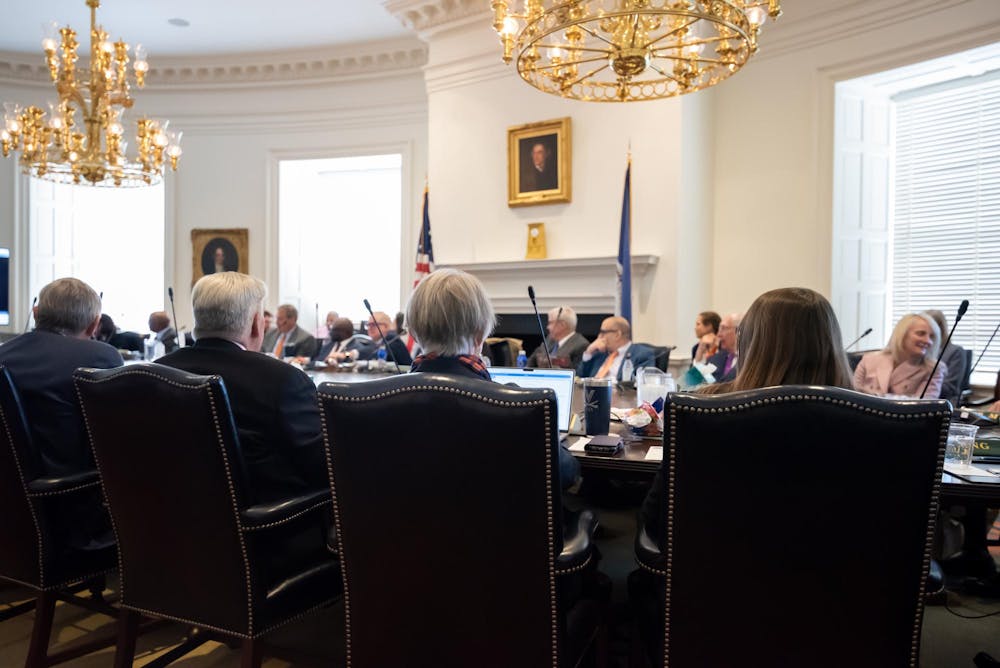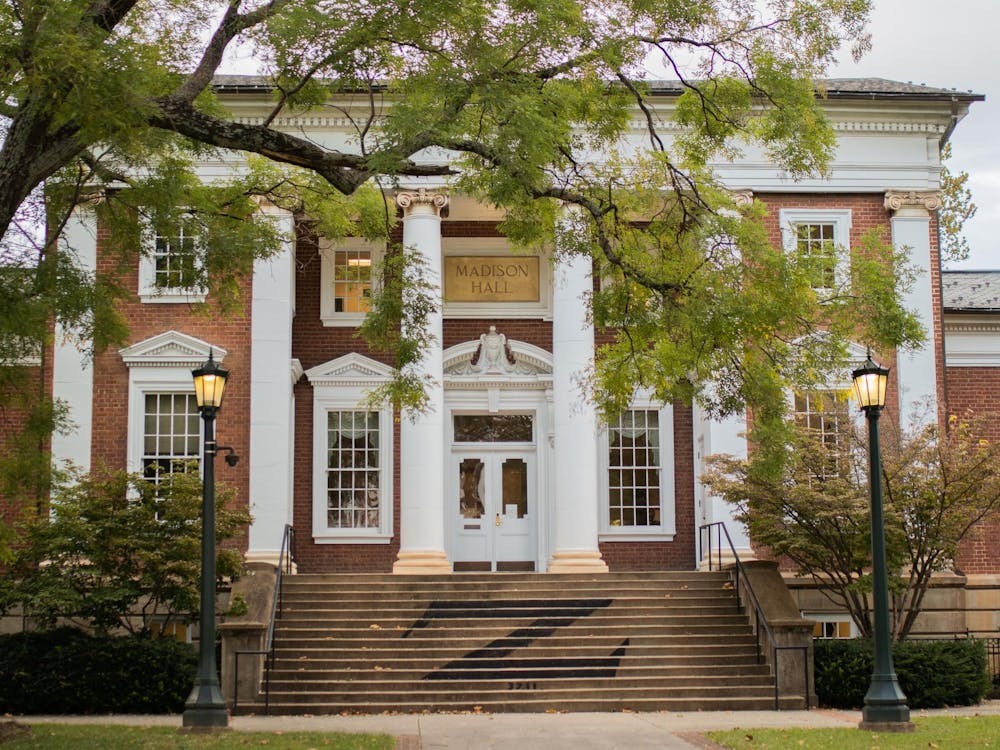The Board of Visitors Buildings and Grounds Committee met Thursday to discuss progress made towards the University’s sustainability goals and review ongoing construction projects, including prospective construction plans for expanding mandatory on-Grounds housing for second year students. The Committee also heard an overview of upcoming plans for the University’s North Fork Research Park, which houses a range of science and technology firms, government agencies and other businesses.
Andrea Trimble, director of the University’s Office for Sustainability, spoke to the Committee about the University’s sustainability goals. Trimble said that many universities have been working to address the world’s environmental challenges, explaining that the University has set the goals of becoming carbon neutral by 2030 and ending its usage of fossil fuels by 2050.
According to Trimble, the University has reduced carbon emissions by 44 percent since 2010 and surpassed the ten year goal of decreasing energy use by 27 percent per square foot over 550 buildings. The University has also avoided over $14 million in energy costs this year across 75 buildings through efforts made by the Building Efficiency Program, a subsect of the OS designed to reduce energy usage across Grounds.
Trimble also spoke about the OS’ student leadership programs alongside two OS student employees — London Tuma, third-year Batten student, and Ellie Cowan, fourth-year Batten student. Tuma provided an overview of the OS’s undergraduate leadership programs while Cowan discussed the many initiatives and environmental benefits of these programs. Tuma said there are currently four student sustainability leadership programs — sustainability advocates, zero waste ambassadors, eco leaders and a student employee program — which offer students hands-on experience to help them become leaders in sustainability.
According to Cowan, one of the many initiatives orchestrated by students in these programs included nine clean up events on the Corner — a stretch of restaurants and businesses located near Grounds and frequented by students — consisting of 220 volunteers removing trash along University Ave.
Other initiatives included 50 University student garden workdays and 32 engagement programs with over 600 student attendees in the past year. OS student leaders also organized a student drive at 24 dorm locations which donated 9,000 pounds of home goods and furniture and over 1,000 pounds of non-perishable food to Goodwill and the U.Va. Community Food Pantry, which offers free food to all University community members, Tuma said.
Much of the meeting was dedicated to discussing ongoing construction projects on Grounds, with Colette Sheehy, senior vice president for operations and state government relations, updating the Committee on housing developments for second-year students. In accordance with the University’s 2030 Plan, which strives to make the institution “great and good” in all that it does, the University hopes to accommodate all second-year students in on-Grounds housing by the year 2030.
According to Sheehy, the University is currently deciding between two sites for construction of residential housing. The first and largest site is across from John Paul Jones Arena on Emmet Street, where the Afghan Kabob restaurant is currently located. The second possible site is at the western end of Ivy Road along the railroad tracks.
Sheehy said that the University is currently in the final stages of procuring a third party developer to design and construct the residential housing needed to accommodate 2,000 to 2,400 additional students.
“We are in the very, final stages of that procurement process, we'll be interviewing the final two firms and then making a recommendation, first to executive leadership, and then bringing that forward to the Board for a selection,” Sheehy said. “But we're pretty excited about the prospect [as] this is just a different way of procuring capital construction from what we usually do.”
In addition to the construction updates, Tim Rose, chief executive officer of the University of Virginia Foundation, also spoke to the Committee to discuss the University of Virginia Foundation. Established in 1993, this foundation provides real estate and financial services for the University. While Rose said the University does not own the foundation, the organization works on behalf of the University to acquire properties that will serve the University community.
“The reason [the Foundation is] so successful is the motto we have right here, which is we only have one customer — it's the people in this room. We serve the University of Virginia,” Rose said.
Rose said that the Foundation had previously acquired properties at the request of the University, providing space for residences such as Bond House, as well as the Student Health and Wellness building. Among these properties is the North Fork Research Park, located across from the Charlottesville Albemarle Airport, which stretches 500 acres and is home to government agencies, science and technology firms and non-profit businesses. According to Rose, these companies offer partnerships with the University to provide students and faculty with a wide array of research and internship opportunities across academic disciplines.
“We have about 10 buildings out there, probably 1,500 employees in over 30 different companies, and [the research park is] very active right now,” Rose said. “About a third of [tenants] are under the category of federal contractors. They work with the National Ground Intelligence Center, they work with the Defense Intelligence Agency … and these contractors hire faculty and students. There are all sorts of ties [with the University].”
Although not discussed in this meeting, the Committee agenda included a written annual report of ongoing work with Historic Preservation Projects on Grounds, including the restoration of the McIntire Amphitheater. Originally created in 1921, the McIntire Amphitheatre offers an outdoor performance space and open seating for students across from Garrett Hall.
According to the report, construction began on the Amphitheatre in Sept. 2023 to repair damage to its stucco walls and attach a new roof. The report said that the University construction team found structural issues with the central wall during the restoration process. It explained that the wall was temporarily stabilized, and the University is now working to find a more permanent solution before completing facade repairs.
The Buildings and Grounds Committee is scheduled to reconvene during the next Board meeting in December.







